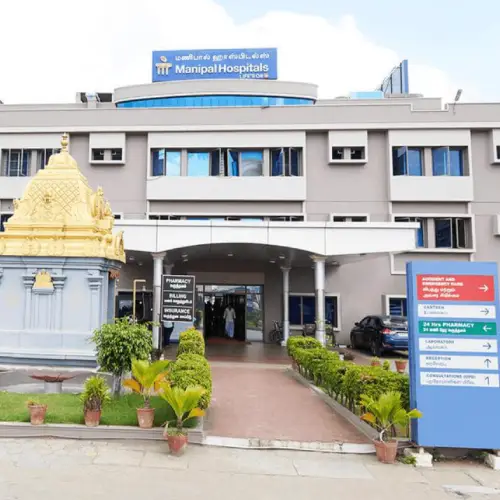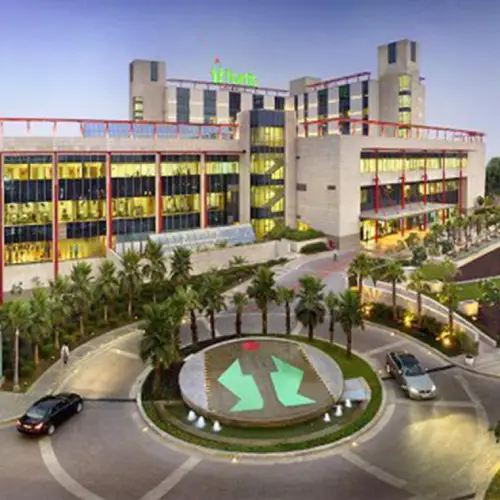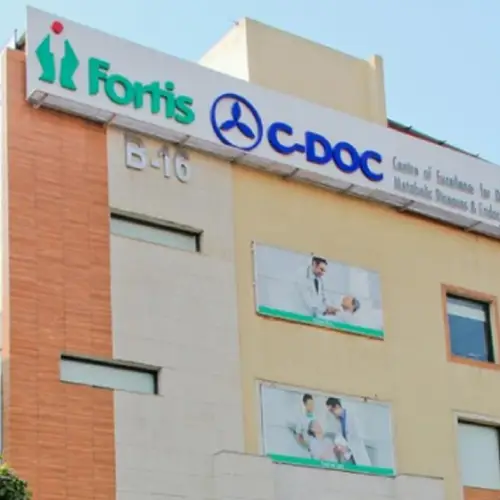Medical Oncology
What Is Medical Oncology?
Medical oncology is a subspecialty of oncology, which is the field of medicine focused on the diagnosis, treatment, and management of cancer. Medical oncologists are physicians who specialize in the medical management of cancer, including the use of medications and systemic therapies to treat the disease. They play a central role in the comprehensive care of cancer patients and work closely with other healthcare professionals as part of a multidisciplinary team.
Here are key aspects of medical oncology:
1. Diagnosis: Medical oncologists are trained to diagnose cancer by evaluating a patient’s medical history, conducting physical examinations, and ordering diagnostic tests such as imaging scans, blood tests, and biopsies. They work to determine the type, stage, and extent of cancer.
2. Treatment Planning: Once a cancer diagnosis is established, medical oncologists develop individualized treatment plans for patients. These plans may include chemotherapy, immunotherapy, targeted therapy, or hormonal therapy, depending on the specific type of cancer, its stage, and other patient-related factors.
3. Chemotherapy: Medical oncologists are experts in the use of chemotherapy, which involves the administration of powerful medications (chemotherapeutic agents) to kill or slow the growth of cancer cells. They consider the appropriate drugs, dosages, and treatment schedules based on the patient’s condition.
4. Immunotherapy: Medical oncologists may utilize immunotherapy, which harnesses the body’s immune system to target and destroy cancer cells. Immunotherapies can be highly effective in treating certain types of cancer.
5. Targeted Therapy: Targeted therapies are drugs that are designed to specifically target and interfere with specific molecules or pathways involved in the growth and spread of cancer. Medical oncologists may use targeted therapies in cases where the cancer has specific genetic or molecular characteristics.
6. Hormonal Therapy: For hormone-sensitive cancers, such as breast or prostate cancer, medical oncologists may prescribe hormonal therapies to block or manipulate hormone receptors that fuel cancer growth.
7. Supportive Care: Medical oncologists also provide supportive care to manage the side effects and complications associated with cancer and its treatments. They work in collaboration with other healthcare providers, including oncology nurses, palliative care specialists, and social workers.
8. Clinical Trials: Medical oncologists often play a key role in clinical research and may enroll eligible patients in clinical trials to explore new cancer treatments and therapies. These trials contribute to advancing the field of oncology and expanding treatment options.
9. Follow-Up and Survivorship Care: Medical oncologists continue to monitor patients during and after cancer treatment to assess treatment response, manage any side effects, and provide survivorship care. This involves regular follow-up appointments and may include ongoing cancer surveillance.
Medical oncologists are dedicated to providing comprehensive, patient-centered care throughout the cancer journey. They work in close collaboration with other healthcare specialists, including surgical oncologists, radiation oncologists, pathologists, radiologists, and other support personnel, to ensure that patients receive the most appropriate and effective treatment for their specific cancer diagnosis.
Molecular Or Targeted Therapy :
Molecular or targeted therapy is a specialized approach to cancer treatment that focuses on targeting specific molecules or pathways involved in the growth and spread of cancer cells. Unlike traditional chemotherapy, which can affect both cancerous and healthy cells, molecular therapy is designed to be more selective, minimizing damage to normal tissues. This approach is based on a detailed understanding of the genetic and molecular alterations that drive cancer development.
Here are key features and principles of molecular or targeted therapy:
1. Targeted Molecules or Pathways: Molecular therapy specifically targets molecules or cellular pathways that are critical for the survival and proliferation of cancer cells. These targets may include proteins, enzymes, receptors, or genetic mutations unique to cancer cells.
2. Personalized Treatment: Molecular therapy is often personalized to the individual patient’s cancer. It involves molecular profiling of the tumor to identify specific genetic or molecular abnormalities that can be targeted with specific drugs.
3. Types of Targeted Agents:
– Monoclonal Antibodies: These are laboratory-created antibodies that can bind to specific proteins on the surface of cancer cells, blocking their growth or signaling.
– Tyrosine Kinase Inhibitors (TKIs): These drugs block the activity of tyrosine kinase enzymes that drive cancer cell growth and division.
– Checkpoint Inhibitors: These drugs release the “brakes” on the immune system, allowing it to recognize and attack cancer cells.
– Hormone Therapy: Used in hormone-sensitive cancers (e.g., breast, prostate), these drugs block the effects of hormones that promote cancer growth.
– PARP Inhibitors: These drugs interfere with DNA repair mechanisms in cancer cells, making them more susceptible to damage.
4. Treatment Goals: The goals of molecular therapy vary depending on the cancer type and specific molecular targets. It can be used for:
– Cancer Control: Slowing or halting the growth and spread of cancer.
– Cancer Regression: Shrinking tumors or reducing their size.
– Prolonging Survival: Extending the lifespan of patients with advanced or metastatic cancer.
– Palliative Care: Providing relief from cancer-related symptoms and improving the quality of life.
5. Combination Therapy: Molecular therapy may be used alone or in combination with other treatment modalities, such as chemotherapy, radiation therapy, or surgery, to enhance treatment effectiveness.
6. Side Effects: While targeted therapy is generally associated with fewer side effects than traditional chemotherapy, it can still cause specific side effects related to the targeted pathway. Monitoring and management of these side effects are essential.
7. Resistance: Over time, cancer cells may develop resistance to targeted therapies. Research continues to explore strategies to overcome resistance, including the development of new agents and combination treatments.
8. Clinical Trials: Many targeted therapies are first evaluated in clinical trials to assess their safety and effectiveness. Patients may have the opportunity to participate in these trials to access cutting-edge treatments.
Molecular or targeted therapy has transformed cancer treatment by offering more precise and effective options for many cancer types. It has led to significant advancements in the management of cancer, improved outcomes, and enhanced the quality of life for many patients. However, it’s crucial to consult with a healthcare team, including medical oncologists and genetic counselors, to determine the most appropriate and tailored treatment plan based on the individual’s cancer diagnosis and genetic profile.
What Are The Types Of Radiation Therapy?
Radiation therapy, also known as radiotherapy, encompasses several types or modalities, each tailored to specific medical conditions and treatment goals. The choice of radiation therapy type depends on factors such as the type and location of cancer, the stage of the disease, and the patient’s overall health. Here are some common types of radiation therapy:
1. External Beam Radiation Therapy (EBRT):
– 3D Conformal Radiation Therapy (3D-CRT): This technique uses computerized imaging to precisely shape the radiation beams to match the tumor’s size and shape, minimizing radiation exposure to healthy tissues.
– Intensity-Modulated Radiation Therapy (IMRT): IMRT delivers radiation with varying intensity levels, allowing for even more precise targeting of tumors while sparing nearby normal tissues.
– Stereotactic Body Radiation Therapy (SBRT): SBRT delivers a highly focused, high-dose radiation treatment in a few sessions to treat small, localized tumors, often in the lungs or liver.
– Stereotactic Radiosurgery (SRS): SRS is a form of SBRT used to treat brain tumors and other abnormalities in the head and neck.
2. Internal Radiation Therapy (Brachytherapy):
– High-Dose Rate Brachytherapy (HDR): This type of brachytherapy involves temporarily placing a radiation source (often a radioactive seed or catheter) directly inside or near the tumor. It delivers a high dose of radiation over a short period.
– Low-Dose Rate Brachytherapy (LDR): LDR brachytherapy involves leaving a radioactive implant in or near the tumor for a more extended period, allowing for a continuous, low-dose radiation delivery.
3. Proton Therapy: Proton therapy uses charged particles (protons) to deliver radiation precisely to the tumor, minimizing radiation exposure to surrounding tissues. It is often used for pediatric cancers and tumors located near critical structures.
4. Gamma Knife Radiosurgery: Gamma Knife radiosurgery is a specialized form of radiation therapy used to treat brain tumors and other neurological conditions. It delivers highly focused gamma rays to the target area with extreme precision.
5. Tomotherapy: Tomotherapy is a combination of intensity-modulated radiation therapy (IMRT) and computed tomography (CT) imaging. It allows for continuous imaging during radiation delivery, optimizing tumor targeting.
6. Total Body Irradiation (TBI): TBI delivers radiation to the entire body and is primarily used before bone marrow or stem cell transplantation to eliminate cancer cells and suppress the immune system.
7. Pencil Beam Scanning: Pencil beam scanning is a more advanced form of proton therapy that delivers radiation in narrow, precise beams, enabling the treatment of complex-shaped tumors while sparing healthy tissues.
8. Flash Radiotherapy: Flash radiotherapy is an emerging technology that delivers radiation at ultra-high speeds. It has the potential to reduce treatment times and decrease side effects, but it is still in the research and development phase.
What Is Hematology?
Hematology is the branch of medicine and medical science that focuses on the study, diagnosis, treatment, and management of disorders and diseases related to blood and blood-forming tissues. It is a specialized field that encompasses various aspects of blood, including its components (such as red blood cells, white blood cells, and platelets), its production, its functions, and the disorders that can affect it.
Key areas of interest and study within hematology include:
1. Blood Disorders: Hematologists diagnose and treat a wide range of blood disorders, including anemia (a deficiency of red blood cells or hemoglobin), bleeding disorders (such as hemophilia and von Willebrand disease), clotting disorders (thrombophilia), and disorders of white blood cells (leukemia, lymphoma).
2. Bone Marrow Disorders: Hematologists also investigate and manage conditions that affect the bone marrow, which is responsible for producing blood cells. These conditions may include myelodysplastic syndromes, myeloproliferative neoplasms, and aplastic anemia.
3. Hemoglobinopathies: Hematology covers disorders related to hemoglobin, the protein in red blood cells that carries oxygen. Hemoglobinopathies include sickle cell disease and thalassemia.
4. Hematologic Cancers: Hematologists are involved in the diagnosis and treatment of various blood-related cancers, such as leukemia, lymphoma, and multiple myeloma.
5. Coagulation and Thrombosis: Hematology includes the study of blood clotting and the management of thrombotic disorders (abnormal blood clot formation) and bleeding disorders.
6. Transfusion Medicine: Hematologists are often responsible for overseeing blood transfusions, ensuring compatibility, and managing transfusion-related complications.
7. Laboratory Analysis: Hematologists often work closely with laboratory professionals to interpret blood tests and diagnostic findings, aiding in the diagnosis of blood disorders.
8. Genetic and Molecular Hematology: Advances in genetics and molecular biology have expanded the understanding of blood disorders at the genetic level. Hematologists may use genetic testing and molecular techniques for diagnosis and treatment planning.
Hematologists are highly trained physicians who often work collaboratively with other medical specialists, such as oncologists, pathologists, and radiologists, to provide comprehensive care for patients with blood-related disorders. They may also be involved in research, clinical trials, and the development of new treatments for hematologic conditions.
Hematology plays a crucial role in both diagnosing and treating a wide range of medical conditions, as blood disorders can have significant impacts on a patient’s health and well-being. Advances in the field of hematology have led to improved diagnostic techniques and treatment options for many blood-related diseases, ultimately benefiting patient outcomes and quality of life.
Common Conditions Of Blood Diseases
- Thrombocytopenia
- Anemia
- Multiple Myeloma
- Leukemias
- Primary Amyloidosis
- Immune Cytopenias
- Porphyria
- Clotting and bleeding disorders
- Myeloproliferative disorders
- Hematologic Malignancies
- Myelofibrosis with Myeloid Metaplasia
- Immune Cytopenias
- Monoclonal Gammopathies of Undetermined Significance
- Enlarged Lymph Nodes or Spleen
- Myelodysplastic Syndromes
- Lymphoproliferative disorders
- Hypercoagulable States and Platelet Disorders
What Is Chemotherapy?
Chemotherapy is a medical treatment modality that uses powerful medications, often referred to as chemotherapeutic agents or drugs, to treat various medical conditions, primarily cancer. Chemotherapy is a systemic treatment, meaning it affects the entire body, and its primary purpose is to destroy or slow the growth of rapidly dividing cells, such as cancer cells. While chemotherapy is most commonly associated with cancer treatment, it can also be used for other conditions, such as autoimmune diseases and certain types of infections.
Key features and aspects of chemotherapy include:
- Cancer Treatment: Chemotherapy is widely used in the treatment of cancer. It can be employed as a primary treatment method or as part of a multimodal approach that may include surgery, radiation therapy, immunotherapy, or targeted therapy.
- Mechanism of Action: Chemotherapy drugs work by interfering with the cell cycle and cell division, preventing the growth and proliferation of rapidly dividing cells. Cancer cells are particularly vulnerable to these effects because they divide more frequently than normal cells.
- Types of Chemotherapy Drugs: There are various types of chemotherapy drugs, each with distinct mechanisms of action and targets. These include cytotoxic drugs (which directly kill cancer cells), targeted therapies (which target specific molecules or pathways in cancer cells), and immunomodulatory drugs (which enhance the immune system’s ability to fight cancer).
- Administration: Chemotherapy can be administered in different ways, depending on the specific drug and the patient’s condition. Common methods include intravenous (IV) infusion, oral pills or capsules, intramuscular (IM) injection, and topical creams or ointments.
- Treatment Schedules: Chemotherapy is typically administered in cycles, with treatment periods followed by rest periods to allow the body to recover from the effects of the drugs. The specific schedule and duration of treatment vary based on the type and stage of cancer.
- Side Effects: Chemotherapy can cause a range of side effects due to its impact on normal cells in the body. Common side effects include nausea, vomiting, fatigue, hair loss, bone marrow suppression (which can lead to anemia, leukopenia, and thrombocytopenia), and gastrointestinal issues. Antiemetic drugs and other supportive medications are often prescribed to manage these side effects.
- Response Assessment: During and after chemotherapy, patients undergo assessments to monitor the treatment’s effectiveness. This may involve imaging tests, blood tests, and clinical evaluations to determine tumor response and any necessary adjustments to the treatment plan.
- Combination Therapies: In many cases, chemotherapy is used in combination with other cancer treatments, such as surgery or radiation therapy. Combinations can enhance treatment outcomes by targeting cancer cells through multiple mechanisms.
- Personalized Medicine: Advances in cancer research have led to the development of targeted therapies that can be tailored to a patient’s specific cancer type and genetic profile, leading to more effective and less toxic treatments.
Chemotherapy is a vital tool in the fight against cancer and has contributed significantly to improving cancer survival rates and outcomes. However, its use can be associated with various challenges and side effects, and treatment decisions are typically made in consultation with a multidisciplinary team of healthcare providers, including medical oncologists, to ensure the most appropriate and effective approach for each individual patie
What Is Immunotherapy?
What Is Target Therapy?
Targeted therapy, also known as molecularly targeted therapy or precision medicine, is a specialized approach to treating cancer and certain other medical conditions that involves targeting specific molecules or pathways involved in the growth and spread of disease. Targeted therapies are designed to selectively interfere with the function of these specific targets, often with the goal of inhibiting the growth and survival of affected cells while sparing healthy cells.
Here are key features and principles of targeted therapy:
1. Identification of Molecular Targets: Targeted therapy relies on a detailed understanding of the molecular and genetic changes that drive the development and progression of diseases, such as cancer. These molecular alterations are unique to the disease and can vary from one patient to another.
2. Personalized Treatment: Targeted therapies are often personalized to an individual patient’s disease. Molecular profiling of the tumor or disease is typically performed to identify specific genetic mutations, amplifications, or other molecular abnormalities that can be targeted with specific drugs.
3. Types of Targeted Agents: There are several types of targeted therapies, including:
– Monoclonal Antibodies: Laboratory-created antibodies that can bind to specific proteins on the surface of cells, blocking their function or signaling.
– Tyrosine Kinase Inhibitors (TKIs): Drugs that inhibit the activity of tyrosine kinase enzymes, which are often overactive in cancer cells.
– PARP Inhibitors: Drugs that interfere with DNA repair mechanisms in cancer cells, making them more susceptible to damage.
– Angiogenesis Inhibitors: These drugs target the formation of new blood vessels (angiogenesis) that supply nutrients to tumors.
– Hormone Receptor Blockers: Used in hormone-sensitive cancers like breast and prostate cancer, these drugs block the effects of hormones that promote cancer growth.
4. Cancer Type and Targeted Therapy: Targeted therapies are used in various cancer types, including lung cancer, breast cancer, colorectal cancer, melanoma, and others. The choice of targeted therapy depends on the specific cancer type and the presence of relevant molecular targets.
5. Combination Therapy: In some cases, targeted therapy is combined with other treatments, such as chemotherapy, radiation therapy, or immunotherapy, to enhance treatment outcomes.
6. Side Effects: Targeted therapies tend to have a different side effect profile compared to chemotherapy. While they are often associated with fewer side effects, they can still cause adverse reactions specific to the targeted pathway. Monitoring and management of side effects are essential.
7. Resistance: Over time, cancer cells may develop resistance to targeted therapies. Research continues to explore strategies to overcome resistance, including the development of new agents and combination treatments.
8. Clinical Trials: Many targeted therapies are first evaluated in clinical trials to assess their safety and effectiveness. Patients may have the opportunity to participate in these trials to access cutting-edge treatments.
Targeted therapy has revolutionized cancer treatment by offering more precise and effective options for many cancer types. It has led to improved outcomes, increased response rates, and enhanced quality of life for some patients. However, the success of targeted therapy depends on the identification of relevant molecular targets and their availability as approved treatments for specific diseases. Treatment decisions are typically made in consultation with a healthcare provider based on the individual’s specific disease characteristics and genetic profile.
Drugs For Chemotherapy
Chemotherapy drugs, also known as chemotherapeutic agents or cytotoxic drugs, encompass a wide range of medications used to treat cancer and other medical conditions. These drugs work by targeting rapidly dividing cells, including cancer cells, and inhibiting their growth and proliferation. There are many different chemotherapy drugs, each with specific mechanisms of action and potential side effects. The choice of chemotherapy drugs depends on the type and stage of cancer, as well as individual patient factors.
Here are some examples of commonly used chemotherapy drugs, categorized by their drug classes and mechanisms of action:
1. Alkylating Agents:
– Cyclophosphamide: Used to treat various cancers, including lymphomas, leukemia, and breast cancer. It interferes with DNA replication and cell division.
– Cisplatin: Used for the treatment of testicular, ovarian, bladder, and lung cancers. It forms covalent bonds with DNA, causing DNA cross-linking and preventing cell division.
2. Antimetabolites:
– Fluorouracil (5-FU): Commonly used for colorectal, breast, and other cancers. It disrupts DNA and RNA synthesis by mimicking the building blocks of nucleic acids.
– Methotrexate: Used to treat leukemia, lymphoma, and various solid tumors. It inhibits the action of an enzyme needed for DNA and RNA synthesis.
3. Anthracyclines:
– Doxorubicin: Used for a wide range of cancers, including breast, ovarian, and lung cancers. It interferes with DNA and RNA synthesis and causes DNA damage.
4. Topoisomerase Inhibitors:
– Etoposide: Used to treat lung cancer, testicular cancer, and some lymphomas. It inhibits topoisomerase II, an enzyme necessary for DNA replication and repair.
5. Taxanes:
– Paclitaxel: Used for breast, ovarian, and lung cancers. It stabilizes microtubules, preventing cell division.
6. Platinum-Based Drugs:
– Carboplatin: Used for ovarian, lung, and other cancers. It forms DNA cross-links, inhibiting DNA replication.
7. Vinca Alkaloids:
– Vinblastine: Used for lymphomas and testicular cancer. It disrupts microtubule formation, preventing cell division.
– Vincristine: Used for leukemia, lymphomas, and neuroblastoma. It inhibits microtubule formation.
8. Antibiotics (for Cancer Treatment):
– Bleomycin: Used for testicular cancer, Hodgkin lymphoma, and other cancers. It causes DNA fragmentation.
– Mitomycin: Used for stomach, pancreatic, and lung cancers. It cross-links DNA.
9. Targeted Therapies: Targeted therapies include drugs like imatinib (Gleevec), trastuzumab (Herceptin), and gefitinib (Iressa). These drugs target specific molecules or pathways in cancer cells.
10. Immunomodulatory Drugs:
– Lenalidomide: Used for multiple myeloma and myelodysplastic syndromes. It affects the immune system and cancer cell growth.
These are just a few examples of chemotherapy drugs, and there are many others available. The selection of chemotherapy drugs and treatment regimens is highly individualized and is based on the patient’s specific cancer diagnosis, stage, and overall health. Chemotherapy is often used in combination with other treatment modalities, and treatment plans are developed by oncologists and healthcare teams to optimize outcomes while managing side effects.
Why Do You Need To Have Chemotherapy Drugs?
Chemotherapy offers significant benefits in the treatment of cancer patients. Here are several compelling reasons to support this claim:
1. Foremost, chemotherapy plays a pivotal role in controlling and improving the patient’s overall quality of life.
2. Chemotherapy is effective for cancers that respond favorably to this treatment approach.
3. When administered in high doses, chemotherapy effectively curtails the proliferation of cancer cells.
4. Furthermore, chemotherapy can lead to a reduction in tumor size, ultimately facilitating safer surgical removal of the tumor from the patient’s body.
What Are Side Effects Of Oncology Treatment?
To mitigate the adverse effects of oncology medications, your physician may recommend additional prescriptions aimed at minimizing these side effects. Below are some of the drugs commonly employed for this purpose:
1. Pain-relieving medications
2. Anti-nausea medications
3. Medications designed to address low white blood cell counts (neutropenia) and prevent infections, such as pegfilgrastim (Neulasta) or filgrastim (Neupogen)
What Are The Benefits And Risks Of Oncology Drugs?
The benefits of oncology drugs can vary from one individual to another, contingent upon the type of cancer being treated. These medications can offer significant advantages, including:
1. Potential for cancer cure.
2. Reduction in tumor size, facilitating easier surgical removal.
3. Enhanced overall treatment outcomes.
4. Slower growth of cancer cells.
5. Prevention of cancer spread to other body parts.
6. Elimination of residual cancer cells after surgery or radiation.
However, it’s crucial to recognize that oncology drugs may also entail side effects, as chemotherapy, in particular, can impact healthy cells in the body, including blood cells, skin, hair, and intestinal lining. Common side effects may encompass:
– Fatigue
– Diarrhea
– Hair loss
– Dizziness
– Mouth sores
– Loss of appetite
– Nausea and vomiting
– Reduced white blood cell count, leading to lowered immunity.
In contrast, targeted therapy or immunotherapy is often considered a safer option as they selectively target unhealthy cells while sparing healthy ones. Nevertheless, it’s essential to acknowledge that there are still potential side effects associated with these treatments, such as:
– Skin rash
– Cough
– Fatigue
– Flu-like symptoms
– Infusion reactions
– Gastrointestinal issues like diarrhea, constipation, nausea, or appetite loss.
Alternative Options For Cancer Treatment
In addition to medication, there are alternative approaches available for those seeking cancer treatment. These alternative options commonly encompass:
1. Surgery: Surgery plays a crucial role in halting cancer’s progression by removing tumors or affected lymph nodes.
2. Radiation Therapy: Another viable alternative is radiation therapy, which employs high-energy beams to eradicate cancer cells.
3. Stem Cell Transplant: Stem cell transplant stands as an available alternative, particularly beneficial for individuals dealing with blood-related cancers like leukemia or lymphoma.
FAQs
Chemotherapy is a medical strategy employed for cancer treatment. It entails the utilization of potent medications designed to locate and eradicate cancer cells within the patient’s body.
Thanks to advancements in medical science, it’s now feasible to continue working while receiving chemotherapy. However, it’s recommended to prioritize adequate rest for better chances of recovery and survival.
Both of these approaches hold their own significance. If medical experts or doctors recommend targeted therapy, it is advisable for individuals to follow their guidance and opt for that method.
Overall, while India may offer more affordable healthcare options compared to some other countries, it’s crucial to prioritize the quality of care and the expertise of the medical team when making healthcare decisions. Additionally, financial planning and assistance may be necessary to manage the cost of cancer treatment effectively.
Neoadjuvant chemotherapy is a specific type of chemotherapy administered to individuals diagnosed with cancer before their primary course of treatment.
Best Hospitals for Orthopaedic Surgical Oncology in India
Fill this form to get a free quote from best hospitals in India


At MediTours India, we stand as a distinguished leader in the realm of medical tourism, dedicated to transforming your healthcare journey into a seamless and transformative experience. With a commitment to excellence and a focus on your well-being, we pave the way for a new era of medical travel.
Contact Us
Address : C603 Jalaram Park LBS Road. Bhandup West Mumbai -400078 Phone : +91 9820344697 Email : ajit@meditoursindia.in
Copyright by indiameditours 2023. All rights reserved.








































